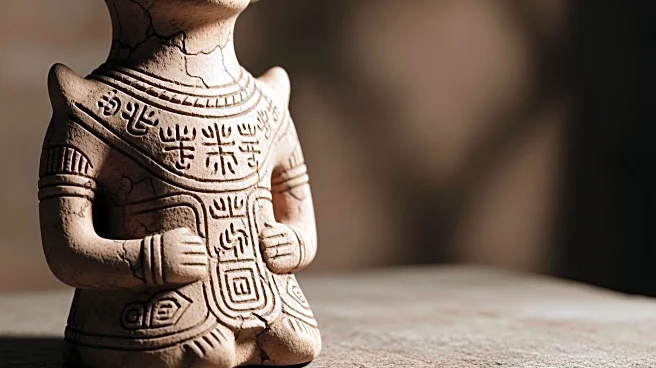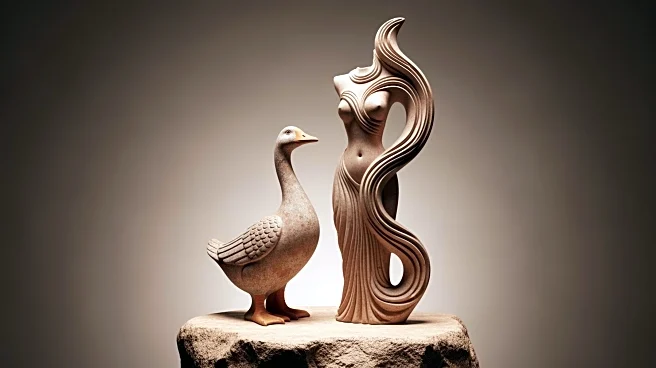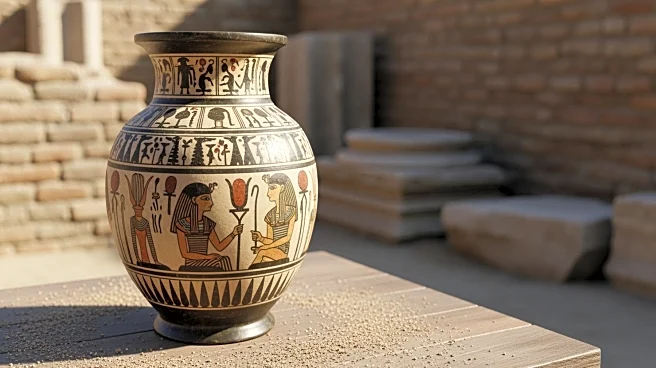What's Happening?
Recent studies in acoustic archaeology have uncovered that prehistoric rock art sites were chosen for their unique acoustic properties, allowing ancient rituals to be both seen and heard. Researchers have found
that these sites, dating from 40,000 to 3,000 years ago, were selected for their ability to produce echoes and resonances that enhanced the sensory experience of rituals. The Artsoundscapes project, a seven-year study, has provided evidence that prehistoric artists deliberately painted in locations where sound transmission created otherworldly effects. This research has been conducted at various sites globally, including Spain's Valltorta gorge and Siberia's Altai mountains, revealing that sound played a crucial role in prehistoric storytelling and shamanic performances.
Why It's Important?
The findings from acoustic archaeology offer a new perspective on the cultural practices of ancient civilizations, highlighting the importance of sound in their rituals and daily life. This research not only enriches our understanding of prehistoric art but also emphasizes the multisensory nature of human experience throughout history. By demonstrating the deliberate selection of acoustically rich sites for rock art, the study challenges traditional views of archaeology that focus solely on visual elements. The insights gained could influence the preservation and interpretation of archaeological sites, ensuring that their acoustic properties are considered in conservation efforts. Furthermore, this research may inspire contemporary artists and architects to explore the integration of sound in their work, drawing parallels between ancient and modern practices.













